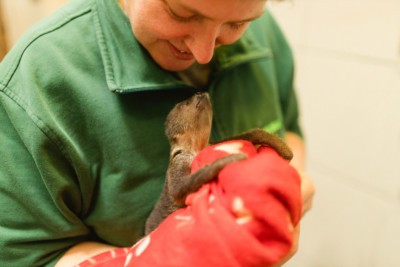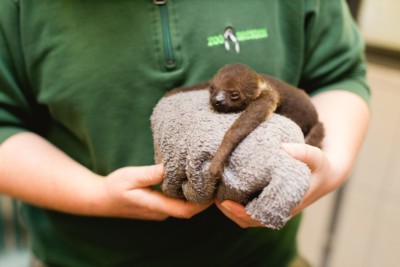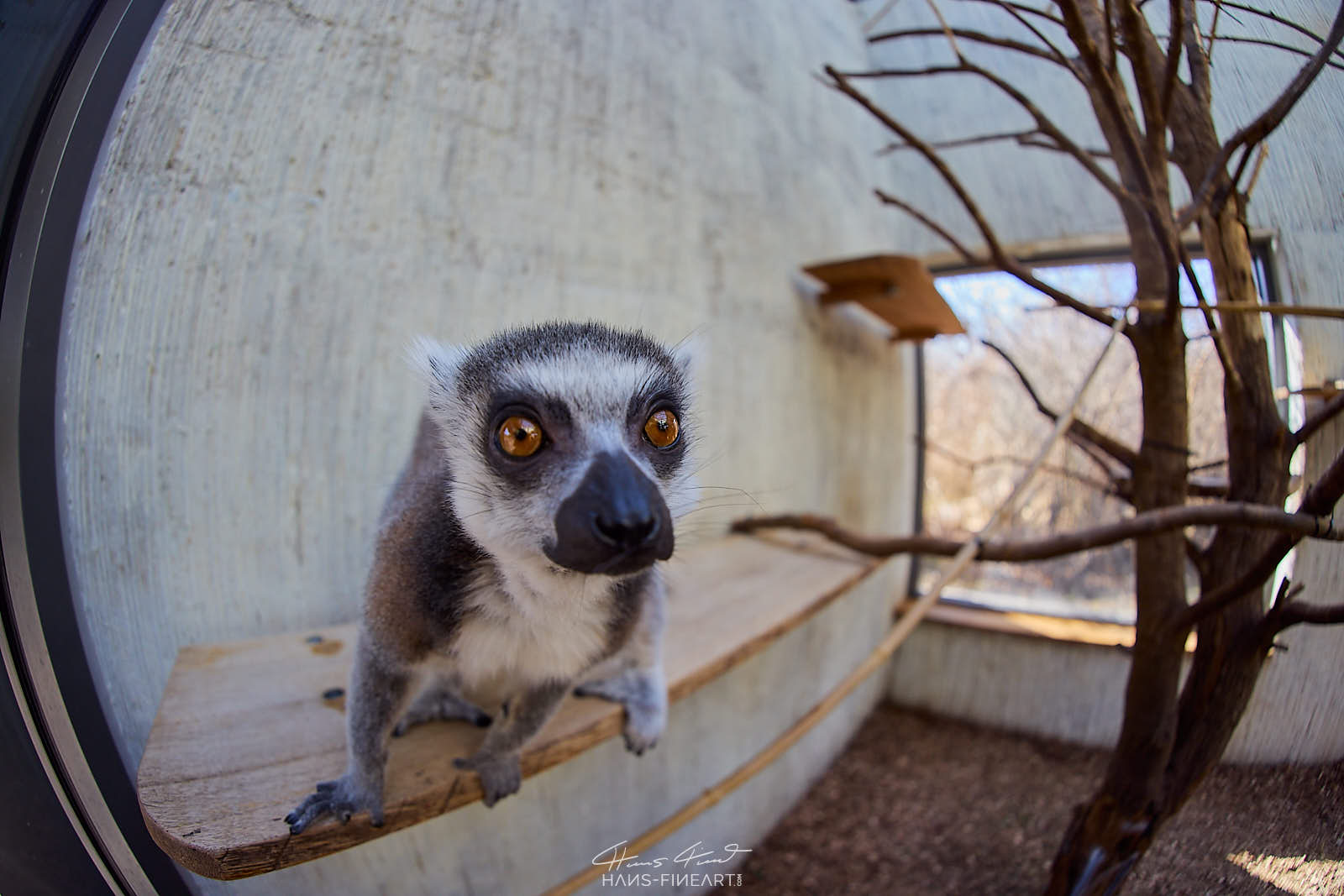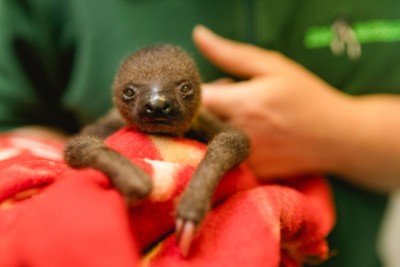A tricky start for Lele
Animal news | 14 October 2021
On 11 September, our two-toed sloth Marlies gave birth to twins after an eleven-month pregnancy. A twin birth is very rare among sloths ‒ and very risky, because the babies have a rather low weight at birth, and mothers only have enough milk and enough space for one cub. Thanks to regular ultrasounds throughout her pregnancy, we knew that Marlies was expecting two babies. We therefore prepared ahead of time, as we wanted to be ready to help her with the cubs or even to rear them ourselves by hand.
Marlies gave birth during the night, and so our team of keepers was only able to be on the sport in the morning, where they found one baby on her belly and the second baby on the ground, where it had fallen. The keepers immediately took the second baby into their care, but very sadly it died the same day. As Marlies didn’t seem to be producing any milk, and the twin she was carrying on her belly wasn’t feeding, we decided to start hand-rearing the tiny newborn that day. This is a very time-consuming, round-the-clock job, but our keeper Nicole Brzoska ‒ who already had experience of hand-rearing other animals ‒ was happy to take it on. Weighing just 280 grams and with none of her mother’s vital first milk (known as colostrum) to nourish her, the tiny female sloth, named Lele, did not get off to a very good start. Normally, sloths weigh around 400 to 430 grams at birth. To begin with, Lele would not feed, and grew weaker and weaker as a result of dehydration and an infection. But she was given immediate medical treatment (drips and antibiotics) and round-the-clock care by our keeper, and after a few long days of hope and fear she thankfully turned a corner.
Lele is doing much better now. She’s healthy, feeding well, and putting on weight. Currently weighing in at 355 grams, she is still delicate, but her future looks much brighter. Nicole Brzoska feeds Lele seven times a day, using a small syringe and a little teat, and giving her goat’s milk, which is very easy to digest. Lele also gets a few nibbles of steamed vegetables, including sweet potato, carrots, potato and courgette ‒ she’s particularly keen on the latter! As looking after the baby sloth is a 24-hour job that doesn’t stop when the zoo closes for the day, Nicole takes Lele home in the evenings as well as on her days off. As with any mammal, alongside basics such as milk and food, body contact, warmth and proximity are essential for youngsters’ health and development.




